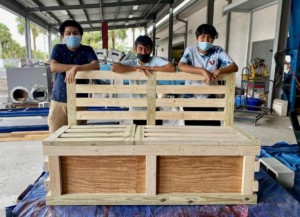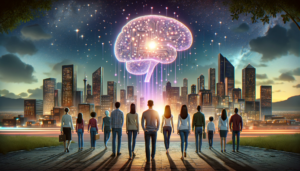The Human Touch in the Age of Technology

Jordan Bookey, Chief Mom at Zoobean, called to talk about the “human touch in the age of technology.” Bookey is a former Googler turned entrepreneur. Her new company curates high-quality children’s books and apps.
We talked about what I call the “blended hunch,” the fact that the entire education sector is pivoting to a combination of online and onsite learning based on a set of early observations about productive components, new school models, and extended reach strategies. Lessons from informal learning, online higher education, and corporate training are useful guideposts, but the U.S. K-12 shift is really a hunch about the importance of personalization and relationships. Prioritizing these two factors also suggests that its time to rethink how schools are structured and how students progress.
Personalization. A lot of us are betting on the benefits of unique learner pathways including customized playlists of learning experiences. (See 4 Essential Attributes of Personalized Learning.)
The potential to tailor skill building to prepare students to engage in interest-based projects sounds like the best of online and onsite learning. (See Summit Denali: 12 Components of an NGLC Winning Design.)
Relationships. For most students, sustained relationships are key to motivation, academic support, and social and emotional learning–that’s why I think looping and multi-age elementary classrooms are the way to go.
Relationships are important to good decision making–that’s why I recommend sustained advisory relationships during secondary education. (See Next-Gen Advisory: 10 Keys to College & Career Readiness).
Grouping. The blended learning universe allows us to rethink the basic building block of education–the classroom. Now that it’s possible (with effort) to manage individual progressions, we don’t need to rely on age cohorts as the basis for organizational design and matriculation management. Social learning platforms like Edmodo make it easy to construct groups–by age, by level, by interest, or by task. These groups can be dynamic–changing daily or weekly as need be.
Blended environments can make more time for small group instruction. Public Impact calls this a time-technology swap. Using adaptive assessments (and other experience embedded assessments) it’s easy to monitor student progress. Using that data and some dynamic scheduling (still done on a spreadsheet in many cases), teachers can construct small groups ready for a particular lesson on a specific day.
Time online. Valuing the human touch in the age of technology also means managing time online, at home and at school–especially for young children. New blended models suggest that 1-2 hours of online work may be productive for primary students. If high school students have demonstrated self management, they may be able to take a couple courses online and others in a blended setting.
Managing screen time and app selections at home is more important than ever. Technology can act as an amplifier–it makes good parents even better, but unfortunately sometimes the opposite appears to be true.
The most exciting blended models value personalization and relationships–the human touch in the age of technology.








0 Comments
Leave a Comment
Your email address will not be published. All fields are required.